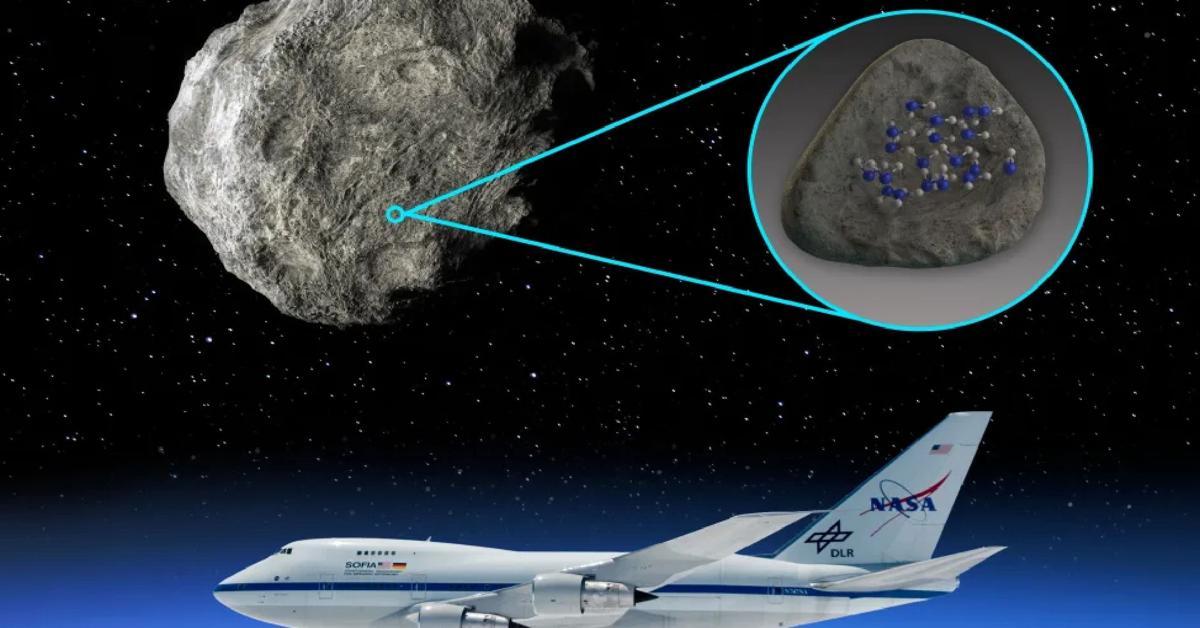
Researchers studied four silicate-rich asteroids using data collected by a telescope-equipped aircraft operated by NASA and the German Aerospace Center
For the first time, water has been found on the outer layer of an asteroid, providing fresh insights into the distribution of water within our solar system.
Researchers examined four asteroids abundant in silicate using information collected by the now-inactive Stratospheric Observatory for Infrared Astronomy (SOFIA), an aircraft equipped with a telescope and operated by NASA and the German Aerospace Center.
Data from SOFIA's Faint Object InfraRed Camera (FORCAST) tool revealed that two of the asteroids, known as Iris and Massalia, display a distinct light wavelength, indicating the existence of water molecules on their surface, as outlined in a recent study.
"Asteroids are remnants from the formation of planets, thus their compositions differ based on their formation within the solar nebula," stated Anicia Arredondo, the lead author of the study and affiliated with the Southwest Research Institute in San Antonio. "The distribution of water on asteroids is particularly intriguing, as it can provide insights into the mechanisms behind water delivery to Earth."

While water molecules have been previously identified in asteroid samples brought back to Earth, this marks the first instance of water molecules being discovered on the surface of an asteroid in space. In an earlier investigation, SOFIA identified similar indications of water on the moon's surface, specifically within one of its largest craters in the southern hemisphere.
"We have identified a characteristic feature that can unequivocally be ascribed to molecular water on the asteroids Iris and Massalia," stated Arredondo in the release. "Our research was inspired by the achievements of the team that detected molecular water on the sunlit surface of the moon. We believed that we could leverage SOFIA to detect this distinctive spectral signature on other celestial bodies."
SOFIA's observations of the moon unveiled an amount of water roughly equivalent to that found in a 12-ounce bottle, confined within a cubic meter of soil distributed across the lunar surface, chemically bound within minerals. In the recent study, scientists from the SwRI found that the prevalence of water on the two asteroids resembled that observed on the moon and could potentially be bound within minerals, similar to the lunar surface, or absorbed within silicate, as stated by the researchers.
Measuring 124 miles (199 kilometers) and 84 miles in diameter, respectively, Iris and Massalia share comparable orbits, journeying an average distance of 2.39 astronomical units (AU), or sun-Earth distances, from the sun.
"Dry" silicate asteroids, which lack water, are formed closer to the sun, while icy materials come together farther away, according to the statement. This is because it was previously believed that any water present on the surface of objects in the inner solar system would evaporate due to the sun's heat. "Understanding the location of asteroids and their compositions tells us how materials in the solar nebula were distributed and have evolved since formation."
As a result, the discoveries at Iris and Massalia suggest that certain silicate asteroids can retain some of their water over long periods and may be more prevalent in the inner solar system than previously assumed. In fact, asteroids are thought to be the primary source of Earth's water, providing the essential components for life as we know it. Understanding the distribution of water in space will help researchers better determine where to seek other potential forms of life, both within our solar system and beyond.
Source: Newsroom